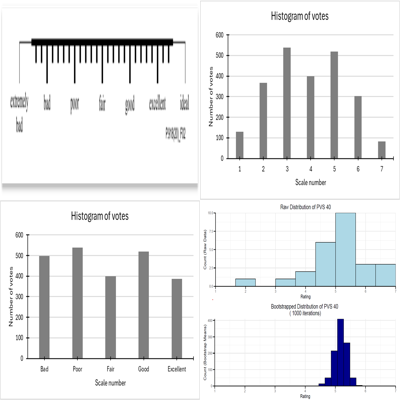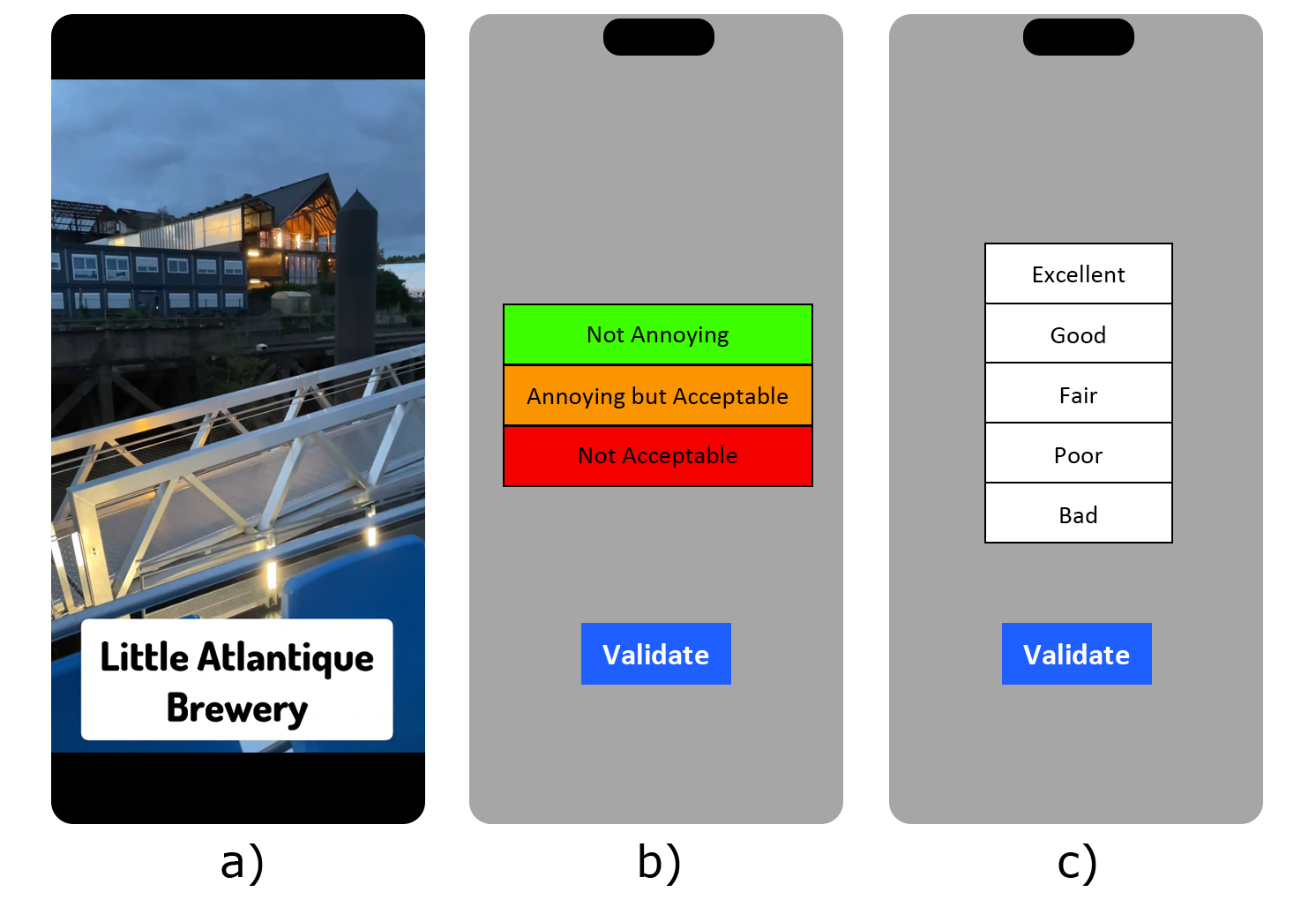
The International Telecommunication Union has a project for developing objective quality models called Parametric Bitstream-Based Quality Assessment of Cloud Gaming services. The model will be divided into an interaction quality module and a video coding impairment module. To evaluate these two modules an experimental campaign was conducted where labs from different parts of the world performed user studies to collect data for the evaluation. This paper describes an experiment for collecting data to evaluate the video coding impairment module. The analysis is based on a bootstrapping approach.

User expectation is one of the main factors that drives the user satisfaction for video streaming service providers and online social media platforms. Depending on the context, users may have different expectations of the video quality. Measuring the Quality of Experience (QoE) by taking user expectations into account provide online social media platforms with increased efficiency and users with higher satisfaction. In this work, we explore the relation between video quality and acceptability&annoyance of video quality in online social media platforms context. Moreover we present the methodology to determine the metric thresholds for acceptability&annoyance of video quality. We compare the estimated thresholds with previous studies.

Video streaming is becoming increasingly popular, and with platforms like YouTube, users do not watch the video passively but seek, pause, and read the comments. The popularity of video services is possible due to the development of compression and quality prediction algorithms. However, those algorithms are developed based on classic experiments, which are non-ecologically valid. Therefore, classic experiments do not mimic real user interaction. Further development of the quality and compression algorithms depends on the results coming from ecologically-valid experiments. Therefore, we aim to propose such experiments. Nevertheless, proposing a new experimental protocol is difficult, especially when there is no limitation on content selection and control of the video. The freedom makes data analysis more challenging. In this paper, we present an ecologically-valid experimental protocol in which the subject assessed the quality while freely using YouTube. To achieve this goal, we developed a Chrome extension that collects objective data and allows network manipulation. Our deep data analysis shows a correlation between MOS and objectively measured results such as resolution, which proves that the ecologically-valid test works. Moreover, we have shown significant differences between subjects, allowing for a more detailed understanding, of how the quality influences the interaction with the service.

Remote operation and Augmented Telepresence are fields of interest for novel industrial applications in e.g., construction and mining. In this study, we report on an ongoing investigation of the Quality of Experience aspects of an Augmented Telepresence system for remote operation. The system can achieve view augmentation with selective content removal and Novel Perspective view generation. Two formal subjective studies have been performed with test participants scoring their experience while using the system with different levels of view augmentation. The participants also gave free-form feedback on the system and their experiences. The first experiment focused on the effects of in-view augmentations and interface distributions on wall patterns perception. The second one focused on the effects of augmentations on the depth and 3D environment understanding. The participants’ feedback from experiment 1 showed that the majority of participants preferred to use the original camera views and the Disocclusion Augmentation view instead of the Novel Perspective views. Moreover, the Disocclusion Augmentation, that was shown in combination with other views seemed beneficial. When the views were isolated in experiment 2, the impact of the Disocclusion Augmentation view was found to be lower than the Novel Perspective views.

The research domain on the Quality of Experience (QoE) of 2D video streaming has been well established. However, a new video format is emerging and gaining popularity and availability: VR 360-degree video. The processing and transmission of 360-degree videos brings along new challenges such as large bandwidth requirements and the occurrence of different distortions. The viewing experience is also substantially different from 2D video, it offers more interactive freedom on the viewing angle but can also be more demanding and cause cybersickness. Further research on the QoE of 360-videos specifically is thus required. The goal of this study is to complement earlier research by (Tran, Ngoc, Pham, Jung, and Thank, 2017) testing the effects of quality degradation, freezing, and content on the QoE of 360-videos. Data will be gathered through subjective tests where participants watch degraded versions of 360-videos through an HMD. After each video they will answer questions regarding their quality perception, experience, perceptual load, and cybersickness. Results of the first part show overall rather low QoE ratings and it decreases even more as quality is degraded and freezing events are added. Cyber sickness was found not to be an issue.

In this study, we investigate a VR simulator of a forestry crane used for loading logs onto a truck, mainly looking at Quality of Experience (QoE) aspects that may be relevant for task completion, but also whether there are any discomfort related symptoms experienced during task execution. A QoE test has been designed to capture both the general subjective experience of using the simulator and to study task performance. Moreover, a specific focus has been to study the effects of latency on the subjective experience, with regards to delays in the crane control interface. A formal subjective study has been performed where we have added controlled delays to the hand controller (joystick) signals. The added delays ranged from 0 ms to 800 ms. We found no significant effects of delays on the task performance on any scales up to 200 ms. A significant negative effect was found for 800 ms added delay. The Symptoms reported in the Simulator Sickness Questionnaire (SSQ) was significantly higher for all the symptom groups, but a majority of the participants reported only slight symptoms. Two out of thirty test persons stopped the test before finishing due to their symptoms.

Measuring Quality of Experience (QoE) and integrating these measurements into video streaming algorithms is a multi-faceted problem that fundamentally requires the design of comprehensive subjective QoE databases and metrics. To achieve this goal, we have recently designed the LIVE-NFLX-II database, a highly-realistic database which contains subjective QoE responses to various design dimensions, such as bitrate adaptation algorithms, network conditions and video content. Our database builds on recent advancements in content-adaptive encoding and incorporates actual network traces to capture realistic network variations on the client device. Using our database, we study the effects of multiple streaming dimensions on user experience and evaluate video quality and quality of experience models. We believe that the tools introduced here will help inspire further progress on the development of perceptuallyoptimized client adaptation and video streaming strategies.